
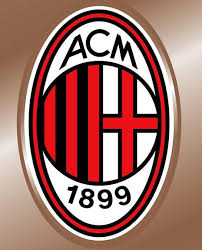 | 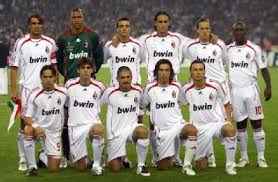 | 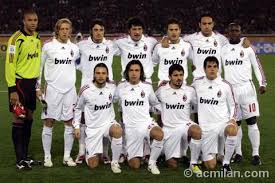 | 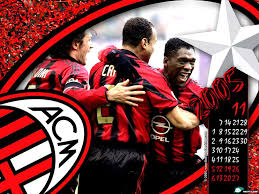 | 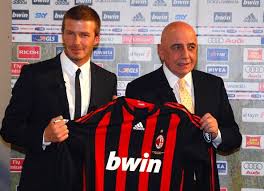 |

Italian Serie A
Italy
The Italian Serie A.
AC Fiorentina vs AC Milan
Official name ACF Fiorentina
City Firenze
Founded 1926
Club colors Purple / Purple / Purple
vs.
0 - 0
AC Milan
Official name AC Milan
City Milano
Founded 1899
Club colors Red-Black horizontally striped / White / Black
Match scheduled:
Date: 19-12-2009
Time:19:45 until 21:45
Week 17 / 17a Giornata :: Italian Serie A 2009/2010


The team's current stadium is the 80,018 seat San Siro, officially known as Stadio Giuseppe Meazza after the former player who represented both Milan and Internazionale. The name San Siro is taken from the district where it's located. San Siro is the home ground of Milan by 1926, when it was privately built by the club. The stadium is shared with Internazionale from 1946, when the other major Milanese football club was accepted as joint tenant. The stadium is well known for its fantastic atmosphere due to the closeness of the stands to the pitch. There is the frequent use of flares by the fans which often cause trouble.
On 19 December 2005, Milan vice-president and executive director Adriano Galliani announced that the team is seriously working to move out from San Siro. He said that Milan's new stadium will be largely based on the Veltins-Arena and following the standards of football stadiums in the United States, Germany and Spain. It will likely be a stadium for football purposes only (with no athletics track). The new stadium is supposed to be named after a sponsor.[34] It remains to see if this plan will proceed or if this is just a ploy to force the owners (Comune di Milano) to sell the stadium to Milan for a nominal fee so as to proceed with extensive renovations. Rumours have also surfaced of Internazionale's intention to also build a new stadium which may also affect this decision.
Supporters and rivalries

Milan is one of the most supported football clubs in Italy, according to an August 2007 research by Italian newspaper La Repubblica.[35] Historically, Milan was supported by the city's working-class and trade unionists,[36] a section of whom were migrants from Southern Italy. On the other hand, crosstown rivals Internazionale were mainly supported by the more prosperous and typically Milanese middle-class.[36] One of the oldest ultras groups in all of Italian football, Fossa dei Leoni, originated in Milan.[37] Currently the main ultras group is Brigate Rossonere and has been since the mid-1970s.[37] Politically, Milan ultras have never had any particular preference,[37] but the media have traditionally associated them with the left-wing,[38] until recent times under Berlusconi's presidency where they are considered somewhat right-wing.[39]
Genoa fans consider Milan a hated rival after Genoa fan Vincenzo Spagnolo was tragically stabbed to death by a Milan supporter in January 1995.[40] Milan's main rivalry, though, is with city neighbour Inter; both clubs meet in the widely-anticipated Derby della Madonnina twice every Serie A season. The name of the derby refers to the Blessed Virgin Mary, whose statue atop the Milan Cathedral is one of the city's main attractions. The match usually creates a lively atmosphere, with numerous (often humorous or offensive) banners unfolded before the match. Flares are commonly present, but they also led to the abandonment of the second leg of the 2004-05 Champions League quarter-final matchup between Milan and Inter on 12 April 2005, after a flare thrown from the crowd by an Inter supporter struck Milan keeper Dida on the shoulder.[41]

The first season under Cecchi Gori's ownership was one of settling, after which the new chairman started to sign some good players like Brian Laudrup, Stefan Effenberg, Francesco Baiano and, most importantly, Gabriel Batistuta, who became an iconic player for the team during the 1990s. In 1993, however, Mario Cecchi Gori died and was succeeded as chairman by his son Vittorio Cecchi Gori. Despite a good start to the season, the Vittorio Cecchi Gori fired the coach after the defeat against Atalanta[4], Luigi Radice, and replaced him with Aldo Agroppi. The results were dreadful: Fiorentina fell into the bottom half of the standings and were relegated on the last day of the season.
Claudio Ranieri was brought in as coach for the 93-94 season, and that year Fiorentina dominated Serie B (second division). Upon their return to Serie A, Ranieri put together a good team centred around new top scorer Batistuta, signing the young talent Rui Costa from Benfica and the new world champion Brazilian defender Marcio Santos. The former became an idol to Fiorentina fans, while the second disappointed and was sold after only a season. Viola finished the season in 10th.
The following season Cecchi Gori bought other important players like Stefan Schwarz. The club again proved its mettle in cup competitions, winning the Coppa Italia against Atalanta, and finished joint 3rd in Serie A. In the summer, Fiorentina was the first non-national champion to win the Supercoppa Italiana, defeating AC Milan 2-1 at the San Siro.
Fiorentina's 95-96 season was disappointing in the league, but they did reach the Cups Winners' Cup semi-final by beating Gloria Bistrita (Away 1-1, Home 1-0) Sparta Prague (Home 2-1, Away 1-1), Benfica (Away 2-0, Home 0-1). The team lost the semi-final to the eventual winner of the competition, FC Barcelona (Away 1-1, Home 0-2). The season's main signings were Luís Oliveira and Andrei Kanchelskis, the latter of whom suffered a lot of injuries.
At the end of the season, Ranieri left Fiorentina for Valencia CF, and Cecchi Gori appointed Alberto Malesani. Fiorentina played well but struggled against smaller teams, although they did manage to qualify for the UEFA Cup. Malesani left Fiorentina after only a season and was succeeded by Giovanni Trapattoni. With Trapattoni's expert guidance and Batistuta's goals, Fiorentina challenged for the title in 1998-99 but finished the season in third, earning them qualification for the UEFA Champions League. The following year was disappointing in Serie A, but Viola played some historical matches in Champions League, beating Arsenal 1-0 at the old Wembley Stadium and Manchester United 2-0 in Florence. They were ultimately eliminated in the second group stage.
At the end of the season Trapattoni left the club and was replaced by Turkish coach Fatih Terim. More significantly, however, Batistuta was sold to Roma, who eventually won the title the following year. Fiorentina played well in 2000-01 and stayed in the top half of Serie A, despite the resignation of Terim and the arrival of Roberto Mancini. They also won the Coppa Italia for the sixth and last time.
2001 heralded major changes for Fiorentina, as the terrible state of the club's finances was revealed: they were unable to pay wages and had debts of around USD 50 million. The club's owner, Vittorio Cecchi Gori, was able to raise some more money, but even this soon proved to be insufficient resources to sustain the club. Fiorentina were relegated at the end of the 2001-02 season and went into judicially controlled administration in June 2002. This form of bankruptcy (sports companies cannot exactly fail in this way in Italy, but they can suffer a similar procedure) meant that the club was refused a place in Serie B for the 2002-03 season, and as a result effectively ceased to exist.

The club was promptly re-established in August 2002 as Associazione Calcio Fiorentina e Florentia Viola with shoe and leather entrepreneur Diego Della Valle as new owner, and was admitted into Serie C2, the fourth tier of Italian football. The only player to remain at the club in its new incarnation was Angelo Di Livio, whose commitment to club's cause further endeared him to the fans. Helped by Di Livio and 30-goal striker Christian Riganò, the club won its Serie C2 group with considerable ease, which would normally have led to a promotion to Serie C1. However, due to the bizarre Caso Catania (Catania Case) the club skipped Serie C1 and was admitted into Serie B, something that was only made possible by the Italian Football Federation's decision to resolve the Catania situation by increasing the number of teams in Serie B from 20 to 24 and promoting Fiorentina for "sports merits"[5]. In the 2003 off-season, the club also bought back the right to use the Fiorentina name and the famous shirt design, and re-incorporated itself as ACF Fiorentina.

The club's unusual double promotion was controversial, with some suggesting that Fiorentina did not deserve it. However, the club remained in Serie B and managed to finish the 2003-04 season in sixth place. This put the Viola in a two-legged playoff against Perugia (the 15th-place finisher in Serie A) for a top-flight place during the next season. Fiorentina completed their remarkable comeback by winning the match 2–1 on aggregate, with both goals scored by Enrico Fantini, to gain promotion back to Serie A. In their first season back in Italian football's top flight the club struggled to avoid relegation, only securing survival on the last day of the season and only avoiding a relegation playoff based on their head-to-head record against Bologna and Parma. In 2005, Della Valle decided to appoint Pantaleo Corvino as new sports director.

In 2005-06, Fiorentina hired Cesare Prandelli as their new head coach and made several signings during the summer transfer market, most notably Palermo's 20-goal striker Luca Toni and French goalkeeper Sébastien Frey. The combination of captain Dario Dainelli and Czech international regular Tomáš Ujfaluši in defence, Cristian Brocchi as midfield ball winner, Martin Jorgensen on the wing, Stefano Fiore as playmaker and key marksman Toni, with Frey in goal, proved to be an outstanding force in Serie A, giving them a fourth place finish with 74 points and qualifying the team for the third qualifying round of the Champions League. This cemented Fiorentina's status as a member of the Italian élite. Toni scored an amazing 31 goals in just 34 appearances, the first player to pass the 30-goal mark since Antonio Valentin Angelillo in the 1958-59 season, for which he was awarded the European Golden Boot.
On 14 July 2006, however, Fiorentina were relegated to Serie B due to their involvement in the 2006 Serie A match fixing scandal and given a 12-point penalty. The team was reinstated to the Serie A on appeal, but with a 19-point penalty for the 2006-07 season. The team's UEFA Champions League place was also rescinded.[6] After the start of the season Fiorentina's penalization was reduced from 19 points to 15 on appeal to the Italian courts.
Despite starting the 2006-07 season with a 15-point penalty, Fiorentina nevertheless managed to secure a place in the 2007-08 edition of the UEFA Cup. The combination of Toni and Adrian Mutu proved to be one of Serie A's most proficient strike partnerships, scoring 31 goals between them.
While many doubted the potential of the Viola in the 2007-08 season due to Toni's departure, Fiorentina had a sensational start to the season and were tipped by Marcello Lippi and other prominent names in football as a surprise challenger for the Scudetto[7]. However, this form tailed off towards the middle of the season, with several disappointing losses in connection with a grievous family loss suffered by club manager Prandelli. The club reached the semi-final of the UEFA Cup, where they were ultimately defeated by Rangers on penalties after two 0–0 ties. The season ended on a high note as Fiorentina defeated Torino 1-0 on the final day of the season to secure a UEFA Champions League spot at the expense of AC Milan. That campaign ended in the group stages, however, with the club finishing third and securing a path to the UEFA Cup instead.
The 2008–09 season continued this success, a fourth place finish assuring Fiorentina's spot in 2010's Champions League playoffs. The Viola also took part to the 2008–09 UEFA Champions League, reaching the group phase after defeating Slavia Prague in the third qualifying round, but the club did not manage to qualify to the knockout rounds and was successively eliminated from the 2008–09 UEFA Cup too. In contrast to their Champions League campaign, La Viola remained in the top tier of the domestic league.
The 2009–10 season started with Fiorentina again involved in the qualifying rounds of the Champions League, this time against Portuguese runners-up Sporting Clube de Portugal, who were defeated only on away goals rule (2–2 in Lisbon, 1–1 in Florence). The club was successively drawn a tough group in the following phase, with Olympique Lyonnais, Liverpool F.C. and Debreceni VSC as opponents. On September 24, 2009, Andrea Della Valle resigned from his position as chairman of ACF Fiorentina, and announced all duties would be temporarily transferred to Mario Cognini, Fiorentina's vice president until a permanent position could be filled.[8] On 26 October 2009, Andrea Della Valle stepped down as chairman. Later, Fiorentina managed to reach the knockout stages of the UEFA Champions League for its first time ever after defeating Lyon 1-0 and finishing ahead of Liverpool. On December 9th, 2009, Fiorentina defeated Liverpool 2-1 at Anfield courtesy of an injury-time winner from Alberto Gilardino. This meant that La Viola topped their group and were assured of a positive seed in the upcoming round of 16 draw.
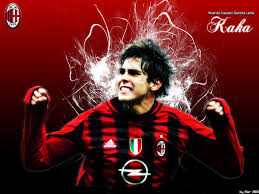 | 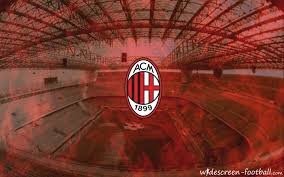 |  |  | 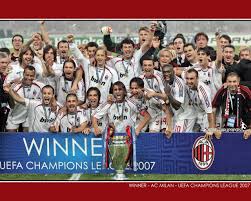 |





